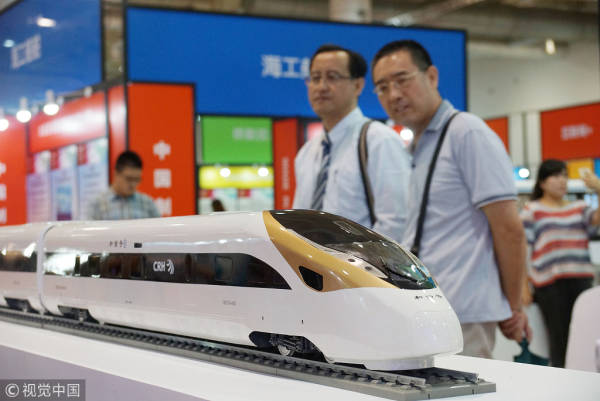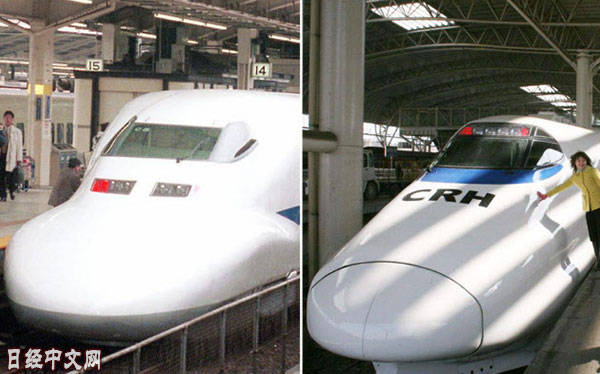Japanese media: China should learn from the "Belt and Road" for intellectual property rights.
China Daily Online, March 25th According to the article published by Nikkei News Chinese website on March 23rd, "China should learn from Japan to build the" Belt and Road "of intellectual property rights. The content of the article is as follows: China is accumulating patents and other intellectual property rights, and is moving towards an "intellectual property power" that surpasses Japan, the United States and Europe in terms of industrial strength. Its stage is its own market and countries along the "Belt and Road" concept.
In March 2017, Beijing Intellectual Property Court found that the portable terminal of Sony Mobile Communication (China) Company infringed the patent of China communication technology company Xidian Jietong, and demanded that Sony stop selling related products and pay about 9 million yuan in compensation.
The patent that Sony was convicted of infringement is China’s autonomous wireless LAN standard called WAPI. Liu Xin, the patent application agent, said that the government of China has set WAPI as a national standard, which requires portable terminals to be adopted.
Communication equipment in Japan, America, Europe and South Korea generally adopts the international standards stipulated by the International Telecommunication Union (ITU). In China, however, Japanese companies are at a disadvantage in competition because they have to adapt to national standards and pay patent licensing fees to China enterprises.
China is already a "big country in patent application". In 2016, the number of patent applications reached 1.33 million, with a global share of more than 40%, which is the well-deserved first place.Japan, which ranked first before, has been decreasing year by year, with only 310,000 pieces in 2016.As for all kinds of intellectual property litigation, there are 130,000 cases in China every year, and only about 500 cases in Japan, which is totally incomparable.
China enterprises are accelerating their patent applications in countries along the Belt and Road Initiative. According to the statistics of China National Intellectual Property Administration, in 2017, China applied for 2,724 cases in India, 1,354 cases in Russia and 279 cases in Viet Nam, respectively, increasing by 2 to 3 times compared with 2012. There were 643 applications in Singapore, which increased nearly fourfold, and 144 applications in France, which increased nearly threefold.

On September 9, 2016, the 10th China International Patent Technology and Products Fair and the High-level Forum on Intellectual Property Protection and Innovation opened in Dalian, with the first "Belt and Road" international exhibition area. @VCG
In absolute terms, Japanese companies still apply for more patents in relevant areas than China, but the gap is narrowing rapidly. Judging from the applicants in China, communication-related enterprises such as Xiaomi and Huawei show an overwhelming sense of existence.
Yasushi Kurosawa, an agent who understands China’s intellectual property strategy, said, "For countries along the Belt and Road where intellectual property protection is not perfect, the government and private enterprises in China are working together to take planned actions, including enlightening them through seminars. Perhaps it is a platform that hopes to master communication infrastructure in various places. "
What is the situation in Japan? In 2002, Japan put forward the idea of "building a country with intellectual property rights", which should have encouraged the government and private enterprises to promote industrial revitalization through intellectual property rights.

However, Kawasaki Heavy Industries, a manufacturer, has not applied for important Shinkansen-related patents overseas in terms of transportation infrastructure export, which is a national policy. As a result, when the high-speed rail enterprise in China, the target of technology transfer, rose as a strong competitor around 2010, Sichuan Heavy Industries could not use patents as a weapon to fight against it.
Because a large number of patents applied by Japanese companies contain many manufacturing technologies that should be kept confidential in factories, the Japanese government warned the industry to reduce applications around 2007.However, enterprises are slow to respond.Technology flows to enterprises in China and South Korea through patent disclosure.I have to say that the actions of the Japanese government and enterprises are uncoordinated and negligent.
Shouguang Arai, the former head of Japan’s Patent Office, said, "Ten years ago, people from the China government asked us about the intellectual property policy, and they modestly studied Japan.". Kurosawa asserted that "Japan should learn from China about intellectual property rights now". If Japan does not face up to reality and take fundamental measures, the differences between them will further widen.